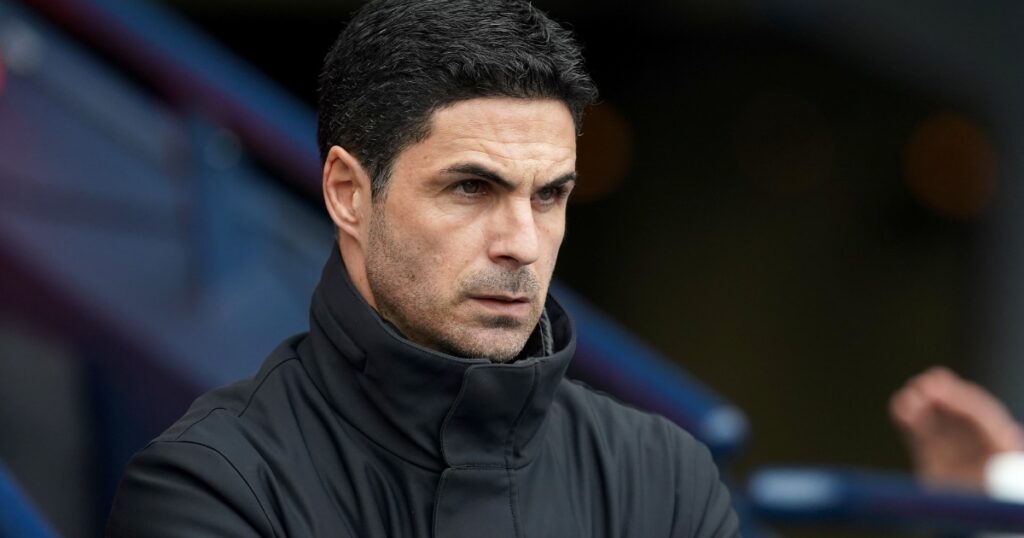
Since Mikel Arteta took the helm at Arsenal, the club has undergone a significant tactical transformation, meticulously crafted over several seasons. Initially, Arteta inherited a team with evident defensive vulnerabilities and a lack of creative flair, finishing eighth in the 2019-20 season. However, from the outset, Arteta’s imprint was clear. He introduced a 3-4-3 formation, emphasizing a patient build-up from the back, a hallmark of his time under Pep Guardiola at Manchester City. Arsenal & Tactical Evolution Under Arteta: A Season-by-Season Breakdown:
2020-21 Season: Laying the Foundation
Arteta’s first full season saw the beginning of a tactical overhaul. The Spaniard focused on a more structured approach, with an emphasis on possession and pressing. However, this season was also about resilience. Despite a mid-season dip, Arteta’s Arsenal managed to finish with a flourish, hinting at what was to come. Key was the integration of youth, with Bukayo Saka emerging as a star, and the tactical flexibility Arteta demonstrated in various cup competitions.
2021-22 Season: Building Blocks of Transition
By the 2021-22 season, Arteta’s vision started taking a more defined shape. Arsenal’s defensive solidity improved, thanks to a backline that now understood the high line and pressing triggers. Offensively, Arteta experimented with different formations, often switching between a 4-2-3-1 and a 3-4-3, depending on the opponent. The introduction of players like Ben White provided the versatility Arteta craved, allowing for fluid positional changes without compromising structure.
2022-23 Season: The Leap Forward
This season marked Arsenal’s most significant tactical evolution. Arteta’s side not only improved defensively but also showcased an attacking prowess that caught the league’s attention. The Gunners racked up 28 Premier League victories, their most in a single campaign, showcasing a blend of pragmatism and flair. The tactical shift involved a more conservative approach in crucial games, often criticized as the ‘dark arts,’ yet it was effective. Arteta’s use of a 5-4-0 formation against Manchester City, for instance, invited pressure but also demonstrated Arsenal’s newfound tactical depth.
2023-24 Season: Refinement and Innovation
Entering this season, Arteta’s Arsenal has shown signs of tactical refinement. While maintaining a robust defensive setup, there’s been a noticeable shift towards a more direct approach in certain matches. This season’s adjustments include better distribution from the back with Aaron Ramsdale, and the deployment of Kai Havertz as a versatile forward, often playing the role of a ‘false nine’. The tactical flexibility now extends to formations that can shift mid-game, providing an unpredictability that has kept opponents on their toes.
Season-by-Season Insights:
Defensive Evolution: From being vulnerable, Arsenal’s defense has become one of the league’s most secure, thanks to Arteta’s emphasis on a high defensive line and aggressive pressing.
Midfield Control: Arteta’s midfield setups have evolved from a double pivot to now incorporating a more dynamic trio, with players like Declan Rice adding a physical and technical presence.
Attacking Fluidity: Initially more structured, Arsenal’s attack has grown more fluid, with wingers like Saka and Martinelli thriving in overlapping runs and central forwards adapting to varied roles.
Mental Resilience: Arteta has instilled a mental fortitude, evident in Arsenal’s ability to grind out results, a stark contrast to the team’s fragility under pressure in earlier seasons.
Adaptability: Perhaps Arteta’s most significant contribution has been teaching Arsenal to adapt. Whether it’s changing formations, tactics, or personnel, Arsenal under Arteta can now match the game’s demands in real-time.
Mikel Arteta’s tenure at Arsenal has been a journey of tactical evolution, marked by incremental improvements season by season. From a team struggling for identity to one challenging for titles, Arsenal’s transformation under Arteta stands as a testament to his vision, tactically and philosophically reshaping the club for the modern game.






